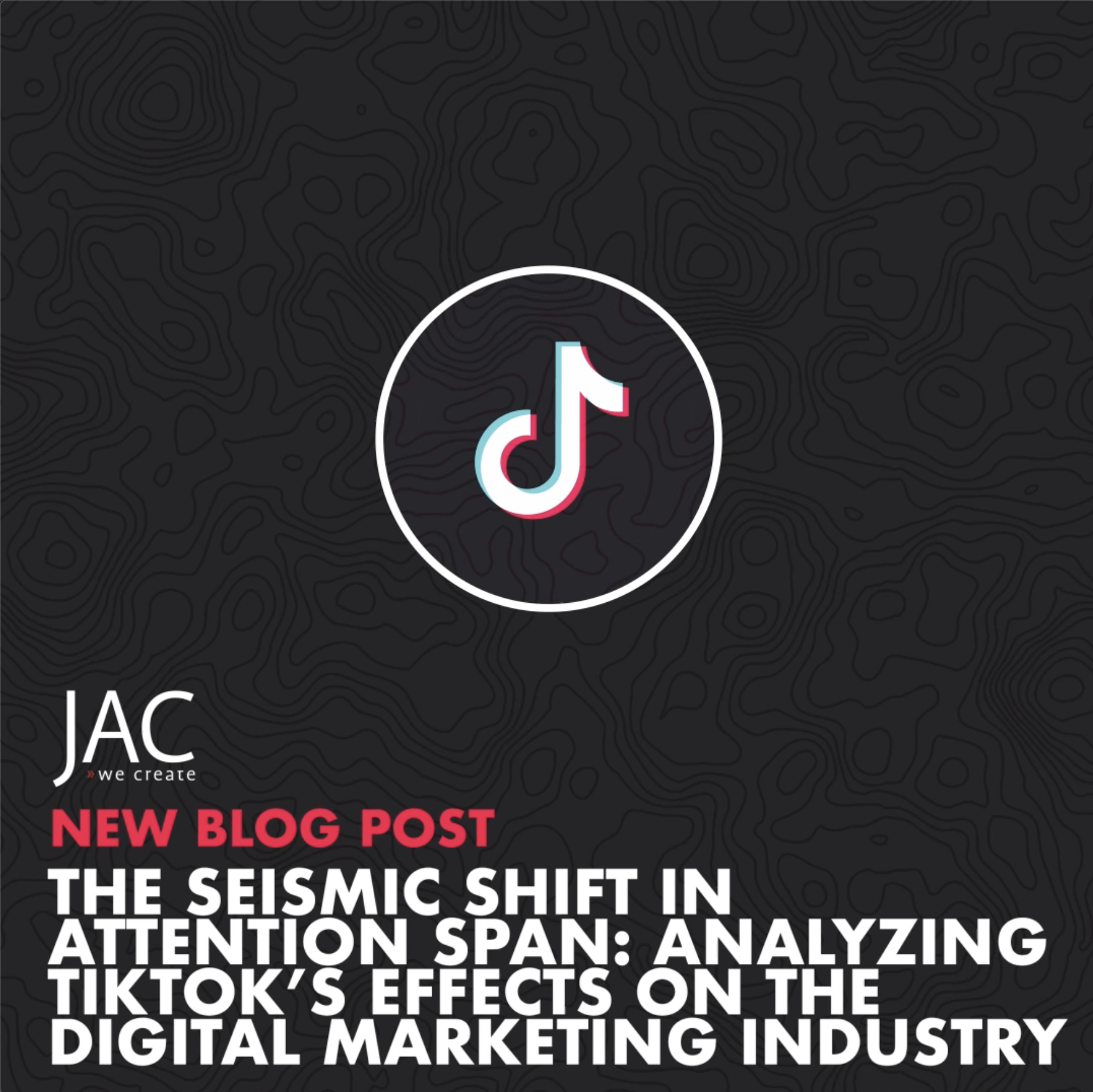The Seismic Shift in Attention Span: Analyzing TikTok’s Effects on the Digital Marketing Industry
Apr 4, 2022
Today, the average human attention span is shorter than ever. We’re constantly bombarded by various distractions — from push notifications on our smartphones to desktop pings. As a result, the expectations and norms of human communication have drastically altered in the past two decades.
Technology has ushered in an age of instant communication. From our private lives to the workplace — people expect you to respond right away. There’s a new urgency and immediacy to how we text, talk, and email — and the same trend is noticeable in the content we consume as well.
Our turn towards quick, short behaviors has led us to appreciate the same kind of content. Our dependency on mobile devices has created a demand for content that can be digested easily and quickly.
Forget about e-books and articles — today’s “impulse generation” appreciates visual content more than anything else. If you need to represent data, today’s consumer likes skimmable infographics more than detailed reports.
And when it comes to entertainment, short-form videos are reigning champions. We can see that from the features available on social media platforms as well. The short personal videos called “stories” that Snapchat introduced a decade ago would become an industry standard — with Instagram, Youtube, Facebook, and most recently, Twitter all introducing a variant of them.
Slowly, video content has shifted towards a story-like format in entertainment as well. Founded in 2016, TikTok is one of the youngest social media giants on the scene — but its focus on short-form videos has led it to immense success in the past half-decade.
Its content creators became the new Internet mega-stars, threatening YouTube’s dominance in the global video content market. And while YouTube’s “reels” are more akin to Snapchat’s stories — it’s clear they were introduced once TikTok’s blazing popularity became apparent.
This shortened attention span has clearly changed all industries reliant on content — from moviemakers and musicians to digital marketers. An oft-repeated study by Microsoft has concluded that the average Internet user has an 8-second attention span — which is all the time marketers have to draw them in before they move on to the next piece of content.
In a world of short digital experiences, linear narratives have lost much of their value. Crowds flock to video content but switching to a visual format is not nearly enough. For instance, auto-playing videos on landing pages have never been popular — and they probably never will be. They take agency away from website visitors, regardless of their format.
On the other hand, no matter what kind of content you’re creating — it will undoubtedly work best in small bites. An engaging, involved, and long article will do better if it’s split up into a series of posts.
That way, you’ll have more SEO real estate — and you’ll be able to address different parts of your target audience with individual posts by catering to their interests. Also, users are used to skimming through articles searching for information they’re interested in — better to make it available right away than to have them leave the website in frustration.
The same is true for longer informational videos — not all of them have to be in the “story” length or format, but a 10-minute promotional video on YouTube just isn’t going to hold anyone’s attention.
The company’s brand voices need to change in line with the TikTok generation as well — people expect more humor and a more personal approach from advertising content, even in spheres where a more suited-up, professional voice was the norm a couple of years ago.
